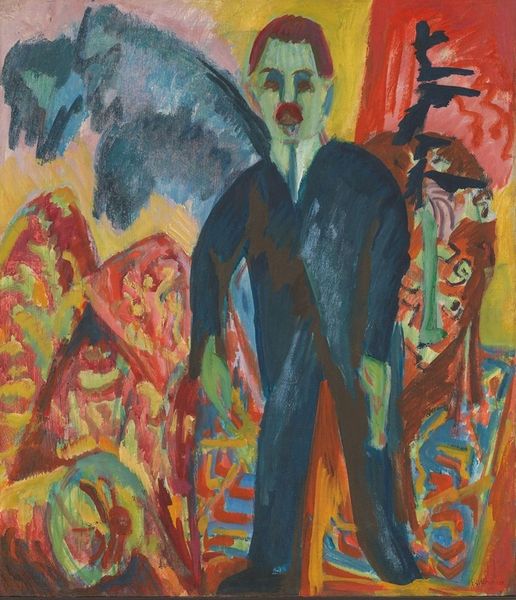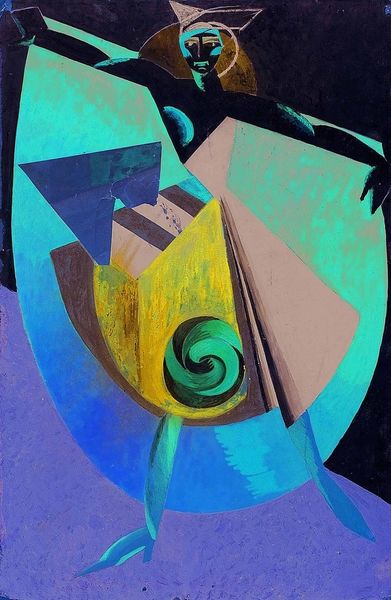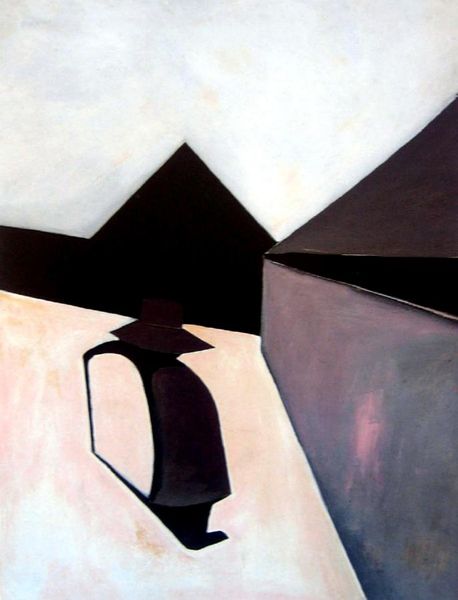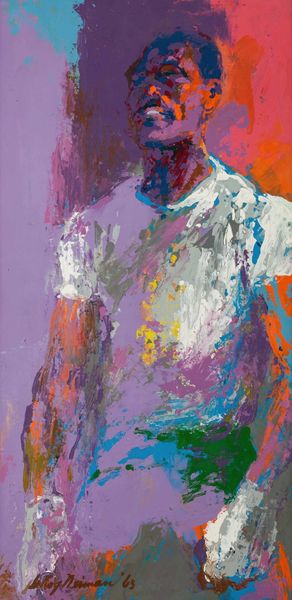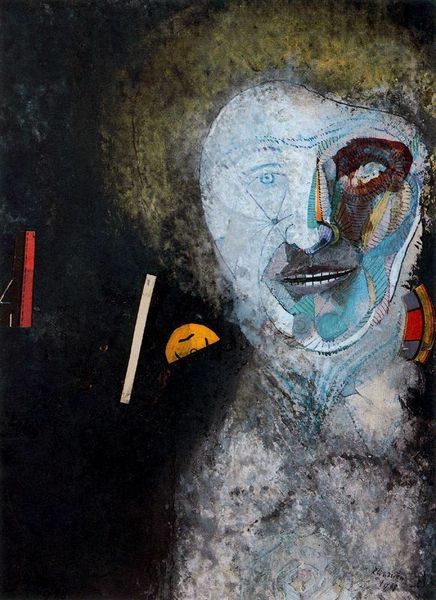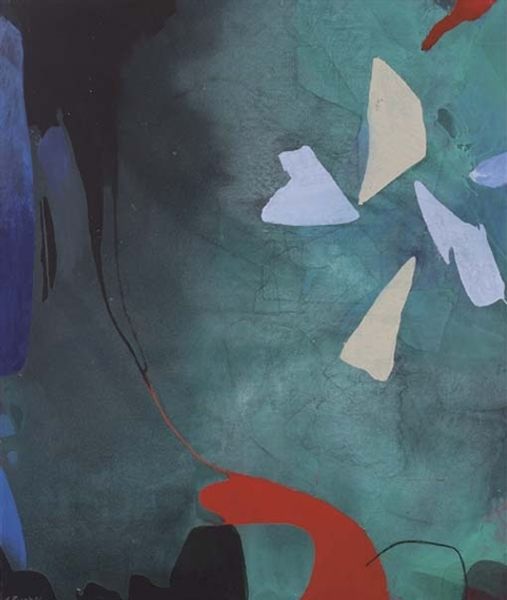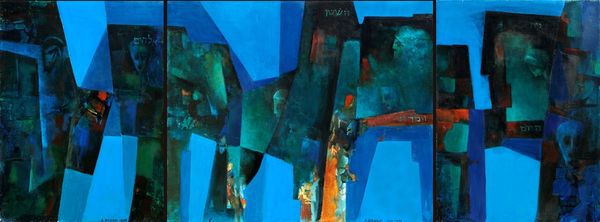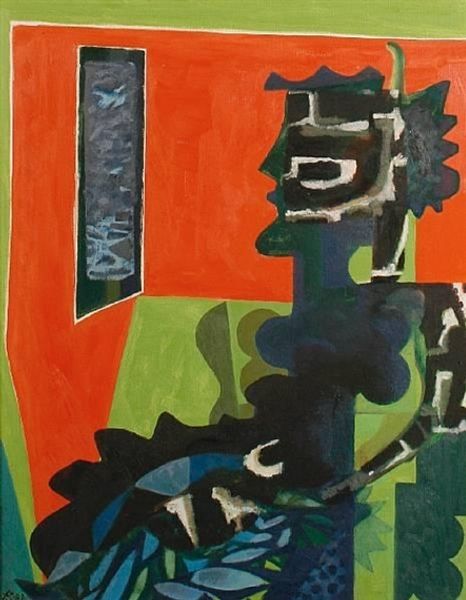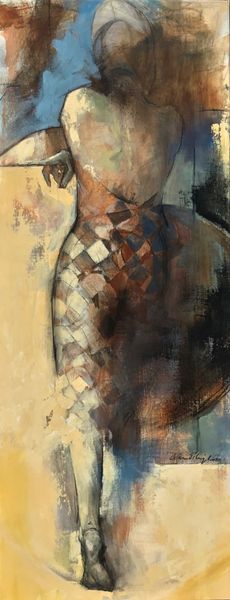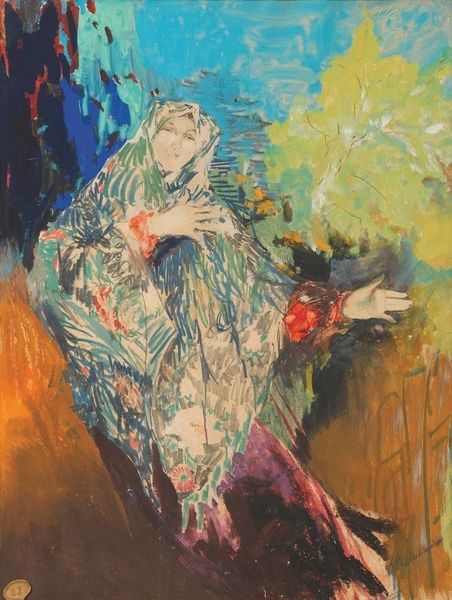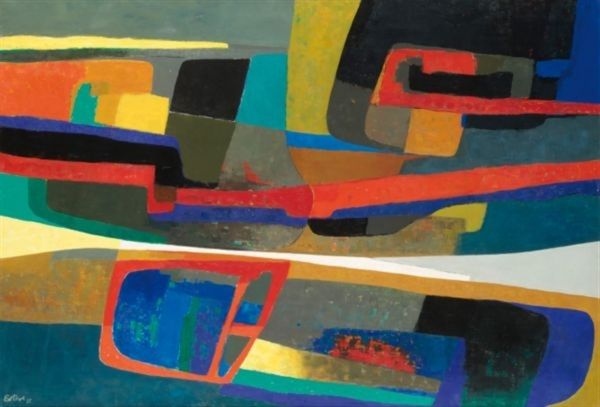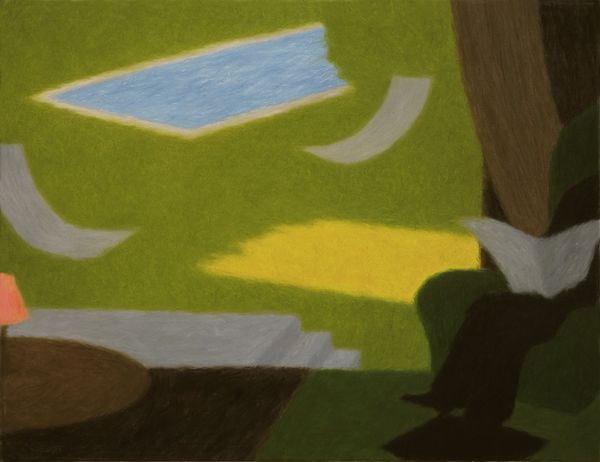
Copyright: Charles Blackman,Fair Use
Curator: Immediately striking is the texture here – the thickly applied paint on the figure’s head and the almost scrubbed-clean background, leaving very little depth. It creates a real push and pull between the elements of the scene. Editor: Let's delve deeper into the context of this painting. The piece before us is Charles Blackman's "The Palm," executed in 1968 using acrylic on canvas. It exemplifies Blackman's post-impressionistic style, blending figuration and landscape. Curator: That juxtaposition, as you point out, really brings to the forefront a sense of psychological displacement, the palm serving as a kind of barrier between the child's emotional state and the outside world. Palm trees traditionally symbolize paradise, eternal life and perhaps it’s the distortion that conveys this barrier of reality. Editor: Agreed, and to expand on this material reading, the acrylic itself, rapidly drying, forced Blackman to work quickly and spontaneously. The application method – scumbling and layering – imbues the scene with dynamism despite its rather sombre colour scheme, reflecting not just a mood but perhaps a way of working. It prompts thoughts of accessible production: how has acrylic as a quick-drying material transformed artists' practice and production? Curator: The colour palette, even though largely muted, also seems intentionally symbolic, each stroke contributing layers of meaning. Blues usually signifying sorrow, even as an image of a 'paradise tree' exists, which creates that duality to emphasize those themes that seem hidden, which is classic for this artist. Editor: And beyond the symbol of a palm itself as the work’s title, its depiction here is interesting. Blackman chooses a frontal view with those strong bands of blue and green, almost as if flattening or simplifying it – moving away from the traditional artistic representation. What implications might the artist convey by choosing a palm? Curator: Well, I find myself seeing beyond just palm imagery but Blackman alluding to growth in hardship. What seems desolate on the surface has a deep symbolism for life beyond sight. The symbolic use of what appears on the canvas creates an immediate and more profound connection with an individual. Editor: Reflecting on the materiality of 'The Palm,' the social aspects of Blackman's acrylic painting speak volumes about changing production standards and artistic autonomy in a quickly evolving landscape. Curator: It becomes more apparent that we are looking at multiple themes – material explorations – each one complementing the next to convey what Blackman seeks to share.
Comments
No comments
Be the first to comment and join the conversation on the ultimate creative platform.
